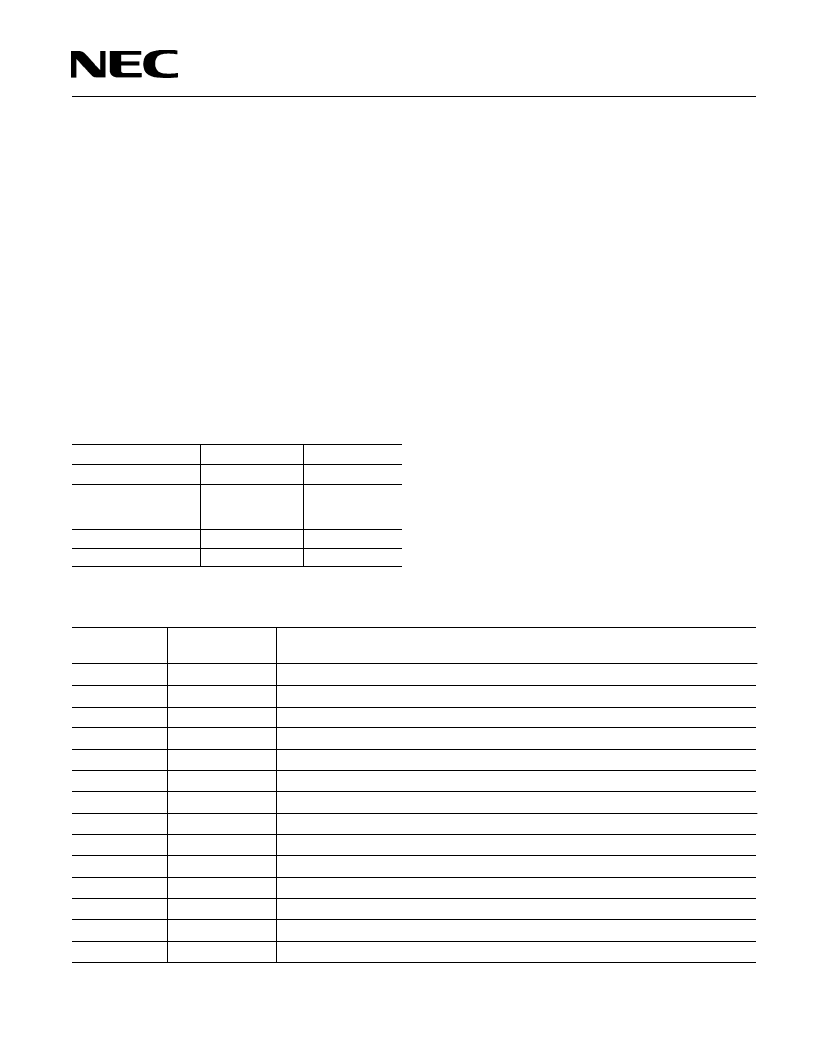- 您現(xiàn)在的位置:買賣IC網(wǎng) > PDF目錄378761 > CB-C8VM (NEC Corp.) Cell-Based CMOS ASIC(CMOS 特殊集成電路) PDF資料下載
參數(shù)資料
| 型號: | CB-C8VM |
| 廠商: | NEC Corp. |
| 英文描述: | Cell-Based CMOS ASIC(CMOS 特殊集成電路) |
| 中文描述: | 細胞的CMOS集成電路的CMOS(特殊集成電路) |
| 文件頁數(shù): | 3/8頁 |
| 文件大小: | 41K |
| 代理商: | CB-C8VM |

3
CB-C8VX/VM
Multi-Voltage I/O Interface
For those systems not yet ready to migrate completely
to 3.3-volts, CB-C8 has a full 5-volt CMOS interface
available. Applying two additional process steps that
realize a "multi-oxide" section in the I/O area, 5-volt
speed and drive capabilities are available with the help
of a separate 5-volt supply rail. The 5-volt I/O buffers
include level shifters to convert the 5-volt signal levels
to the internal core supply voltage of 3.3-volts. This
CB-C8 derivative is called CB-C8VM and is, except for
the different I/O structure, identical to CB-C8VX.
For moderate speed and driveable 5-volt I/O cell
requirements, CB-C8VM's flexibility provides tolerant
I/Os that safely interface to 5V devices using a single 3.3-
volt power supply.
In both cases, the 3.3-volt and 5-volt interfaces can be
mixed without restriction along the entire I/O ring.
System on Silicon
NEC offers a wide selection of CPU/MCU cores, industry-
standard intelligent peripheral macros, and compilable
RAM/ROM blocks as well as analog functions in hard
macro form that can be integrated onto a single CB-
C8VX/VM chip. Including such macrofunctions in an
ASIC design makes it possible to achieve a high level of
integration, performance, and system security.
The range of NEC's on-chip macrofunctions includes
NEC's proprietary 32-bit V810 RISC CPU, and an
upgraded high-speed version of the popular 16-bit
CPU V30HL, called V30MX, which operates at
clock speeds of 33 MHz at 3.3-volts, and offers an
improved 286-compatible address pipelining and uses
a 24-bit address bus. Other specific cores can be
implemented on request. For details about the full
range of on-chip macrofunctions, refer to Table 4.
Embedded macrofunctions are easy to place, route,
and simulate. Because these macros are derived from
NEC's standard parts, they have fully characterized
parameters and can be tested with standard test
vectors to ensure full functionality and reliability.
NEC's test bus architecture allows complete system
simulation, production testing of the internal circuits of the
macrofunctions, and seamless embedded CPU core
emulation. The CPU may be connected externally and
can be replaced by an in-circuit emulator (ICE). All this is
performed with only two dedicated test control pins.
CB-C8VX
CB-C8VM
Device Names
μPD97xxx
μPD99xxx
Interface options
true 3.3 V
5 V tolerant
true 3.3 V
5 V tolerant
true 5 V CMOS
Core voltage
3.3 V
3.3 V
I/O voltage
3.3 V
3.3 V and 5 V
Table 4. Macrofunction Range
Comparable
Device
Macro
Description
NZ 70008H
μPD70008A
Z80: 8-bit microprocessor (16 MHz)
NZ V30MX
μPD70108H
V30MX: 16-bit microprocessor (16-bit data bus, 33 MHz)
NZ V810
μPD70732
V810: 32-bit RISC microprocessor (25 MHz)
NZ 71037H
μPD71037
Programmable DMA controller (4 channels, 20 MHz)
NZ 71051H
μPD71051
USART: serial data control (full-duplex Tx/Rx, 300kbit/s, 20 MHz)
NZ 71054H
μPD71054
Programmable timer/counter (16-bit, 3 counter, 6 modes, 20 MHz)
NZ 71055H
μPD71055
Programmable parallel interface (8-bit, 3 I/O ports, 3 modes)
NZ 71059H
μPD71059
Programmable interrupt control (64 interrupt request inputs)
NA 4993
μPD4993
8-bit parallel I/O real-time clock
NA 72065BL
μPD72065B
Single-double density floppy disk controller
NZ 72103
μPD72103
HDLC Controller: Full duplex, Baud rate 4 Mbps, built-in DMA
M I
2
C
—
I
2
C Bus interface: receive, transmit, master and slave
NA 16450L
NS16C450
UART: for PC-compatible serial ports
NA 16550L
NS16550A
UART with FIFO: for PC-compatible serial ports
Z80 is a trademark of Zilog, Inc.
V30HL, V30MX and v810 are trademarks of NEC Corporation
I
2
C
is a trademark of Philips
相關(guān)PDF資料 |
PDF描述 |
|---|---|
| CB-C8VX | Cell-Based CMOS ASIC(CMOS 特殊集成電路) |
| CB-C8 | 3-VOLT, 0.5-MICRON CELL-BASED CMOS ASIC |
| CB3-2CM | 7x5mm Low Cost clock Oscillator |
| CB3LV-2CM | 7x5mm Low Cost clock Oscillator |
| CB3LV-2IM | 7x5mm Low Cost clock Oscillator |
相關(guān)代理商/技術(shù)參數(shù) |
參數(shù)描述 |
|---|---|
| CBC910 | 制造商:CYMBET 制造商全稱:CYMBET 功能描述:Charge Pump and Battery Management ASIC |
| CBC910-BDC-WP | 制造商:CYMBET 制造商全稱:CYMBET 功能描述:Charge Pump and Battery Management ASIC |
| CBC910-BUC-WP | 制造商:CYMBET 制造商全稱:CYMBET 功能描述:Charge Pump and Battery Management ASIC |
| CBC910-D3C | 制造商:CYMBET 制造商全稱:CYMBET 功能描述:Charge Pump and Battery Management ASIC |
| CBC910-WAF | 制造商:CYMBET 制造商全稱:CYMBET 功能描述:Charge Pump and Battery Management ASIC |
發(fā)布緊急采購,3分鐘左右您將得到回復。